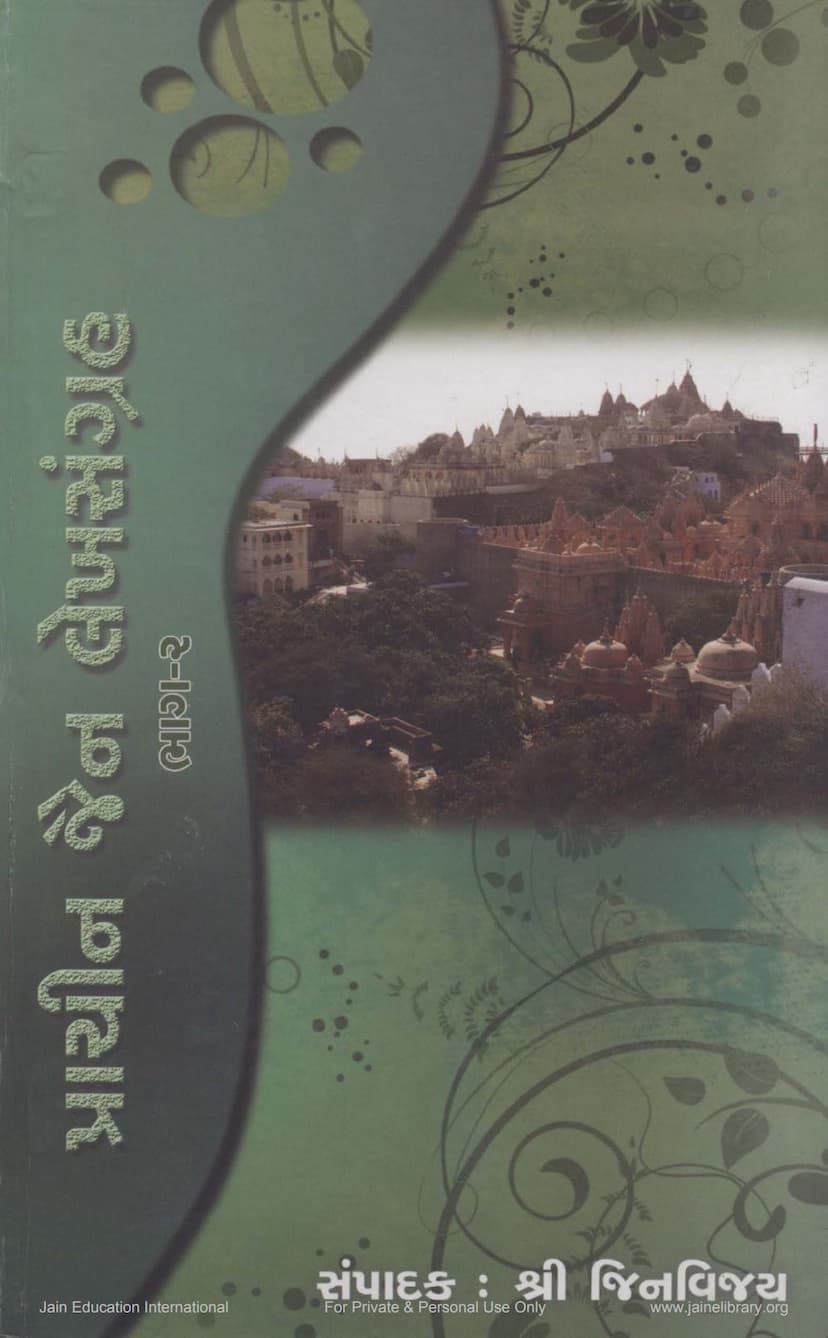Prachin Jain Lekh Sangraha Part 02
Added to library: September 2, 2025

Summary
The provided text is an excerpt from "Prachin Jain Lekh Sangraha Part 02" (Collection of Ancient Jain Inscriptions, Part 02), compiled by Jinvijay and published by Jinagna Prakashan Ahmedabad. This summary focuses on the core content related to ancient Jain inscriptions and the discussions surrounding them, particularly in relation to historical interpretations and debates within the Jain tradition.
Overall Purpose and Content:
This volume, "Prachin Jain Lekh Sangraha Part 02," is a compilation of ancient Jain inscriptions, primarily focusing on those found on stone tablets, temple walls, and statues. The overarching goal of this collection is to preserve and disseminate historical Jain literature and epigraphy, ensuring that the rich history and teachings of Jainism remain accessible. The editor, Jinvijay, along with the publisher and patrons, are dedicated to the preservation of these ancient texts.
Key Themes and Discussions:
-
Preservation of History: The publisher emphasizes that this is a re-publication of a rare and valuable book to keep forgotten or disappearing history alive. The inscriptions, especially those on Shatrunjay and Siddhgiri (Girnar) hills, are highlighted as being of immense historical importance.
-
Debate on Chaturmas Yatra (Monsoon Pilgrimage): A significant portion of the text is dedicated to addressing the controversy surrounding whether Jain pilgrimage to Shatrunjaygiri (Girnar) is permissible during Chaturmas (the four-month monsoon period).
- Arguments Against: Some individuals, referred to as "Gitarthas" (learned scholars), are cited as prohibiting the journey during Chaturmas, claiming it incurs penance for the "Chhath" or "Akram" (a specific ritual violation).
- Arguments For (Historical and Scriptural Evidence): The text strongly refutes this prohibition. It presents historical evidence from ancient texts like "Shatrunjay Mahatmya" by Acharya Dhaneshwar Suri, which mentions the pilgrimage and worship of Tirthankaras (Ajitanath and Shantinath) on Shatrunjaygiri during Chaturmas by various beings, including humans. It explicitly states that nowhere in the scriptures is there a mention of penance for undertaking the pilgrimage during Chaturmas.
- Epigraphical Evidence: Crucially, the text highlights inscriptions, particularly from Shatrunjaygiri, dating back to the 16th century Vikram era (e.g., Samvat 1620), which clearly record the installation (pratishtha) of temples and images on the mountain during Chaturmas. This is presented as irrefutable proof that such pilgrimages were indeed conducted in ancient times, contradicting the notion of a prohibition.
- Critique of Modern Interpretations: The text criticizes those who impose restrictions on Chaturmas yatras, accusing them of making "gappa" (tall tales) based on their own interpretations of scriptures rather than true scholarship. The publisher expresses regret that even some spiritual leaders oppose these pilgrimages, contrary to the historical traditions of their own lineage (e.g., Tapagachha).
-
Scholarly Analysis (Jinvijay's Role): The editor, Jinvijay, provides a critical analysis ("avalokan") of the inscriptions. His work is praised for its meticulous nature, including cross-referencing with external sources like "Epigraphia Indica." He explains the context of the inscriptions, the challenges in their preservation (due to renovations and sectarian rivalries), and the importance of the linguistic and historical data they contain, especially regarding the evolution of Jain Prakrit and Sanskrit usage.
-
Types of Inscriptions: The compilation includes inscriptions found on copper plates (tamrapatra), stone slabs (shilapatta), and statues (murti). The volume primarily focuses on stone inscriptions and those found on statues.
-
Key Historical Figures and Lineages: The text meticulously records the names of various Jain Acharyas and monks from different gacchas (lineages) associated with these inscriptions, providing a valuable genealogical and historical record of Jain monastic orders like the Tapagachha, Kharatara Gachha, Nagendra Gachha, Aryarakshit Gachha, etc.
-
Royal Patronage and Social History: Many inscriptions detail donations and patronage from royal families, ministers, wealthy merchants (shravaks), and various guilds, shedding light on the socio-economic conditions and the strong support Jainism received from different strata of society throughout history. The inscriptions mention rulers like Kumarapala, Mohamad Begda, Akbar, and Jahangir, highlighting the influence of Jainism even in non-Jain rulers' courts.
-
Geographical Scope: The inscriptions are drawn from various locations across Western India, including significant Jain pilgrimage sites like Shatrunjaygiri, Girnar, Abu, Ranakpur, Vadnagar, Patan, and others.
-
Chronological Range: The collected inscriptions span a vast period, from as early as the 10th century Vikram era (e.g., Samvat 999) up to the 20th century, providing a broad historical overview.
-
Detailed Indexing: The book includes comprehensive indexes, such as a chronological index of inscriptions (Samvat index), an index of authors and preceptors (Suris and Sadhus), an index of castes and lineages, and a place-name index, making the information highly accessible for researchers.
In essence, "Prachin Jain Lekh Sangraha Part 02" is a scholarly work that meticulously preserves and presents ancient Jain inscriptions. It goes beyond mere compilation by engaging with historical debates, particularly the permissibility of monsoon pilgrimages, using epigraphical evidence to support its arguments and critique opposing views. The work is crucial for understanding the history of Jainism, its monastic traditions, and the societal context in which it flourished.